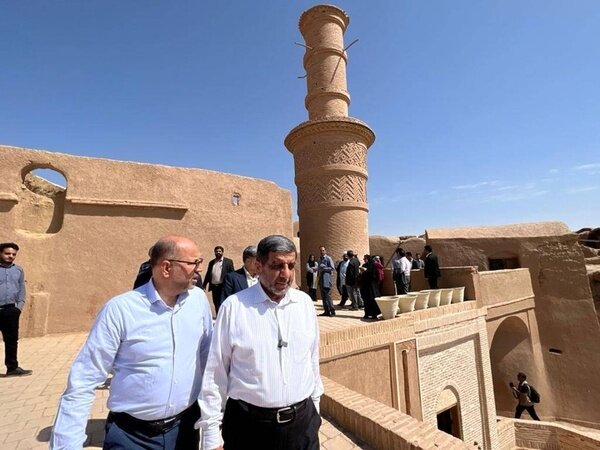Tourism minister visits ancient Kharanaq, urges restoration of its mud-brick fortress

TEHRAN – On Thursday, Iran’s tourism minister Ezzatollah Zarghami paid a visit to the ancient town of Kharanaq, where he called for restoration work to be commenced on its mud-brick fortress.
“When it comes to the cultural heritage of the nation, Kharanaq fortress marks one of the treasured historical buildings of the country,” the minister said.
“The fortress should be restored as a tourist destination... Its honored status among other historical monuments should be more evident than before,” Zarghami said.
The minister said the stronghold was once very prosperous when it was on the path of many travelers and pilgrims for centuries.
Located in Ardakan county of Yazd province, Kharanaq approximately dates 4,000 years, while its dilapidated adobe buildings that draw sightseers from around the world date back around 1,000 years.
The abandoned town is a photographer’s dream with a labyrinth of streets, tunnels, passageways, and rooms, as well as more impressive buildings such as a tiny mosque, a shaking minaret, and an old caravanserai that welcomed merchants and pilgrims centuries ago, according to Ancient Origins.
Meaning ‘place of birth of the sun’, Kharanaq is divided into two parts– the Old Town, which is almost completely deserted, and the New Town, where tens of families continue to live.
Moreover, Kharanaq is famed for its well-preserved houses and historically important monuments.
Built of sun-baked adobe bricks, the old town is one of the largest clusters of adobe buildings in Iran. It was once a prosperous farming village, but when the water supply dried up, residents abandoned the village and the town fell into ruins.
There are several magnificent monuments in the village. A mosque from the Qajar period (1789-1925) has been fully restored and features a 15 meter high minaret known as the "Quaking Minaret of Kharanaq". The 17th-century minaret has three floors and a spiral staircase leads upstairs. The minaret trembles and vibrates frequently. The cause of this phenomenon remains unknown.
In addition, on the outskirts of Kharanaq is a well-preserved caravanserai, a place where merchant caravans from the Qajar Dynasty era stopped. The caravanserai is fortified with stables for pack animals, storerooms and rooms for travelers.
Other highlights include an old castle associated with the historical era of Islam, old aqueducts built to irrigate the surrounding fields, and an old but still functional bridge.
AFM
Leave a Comment